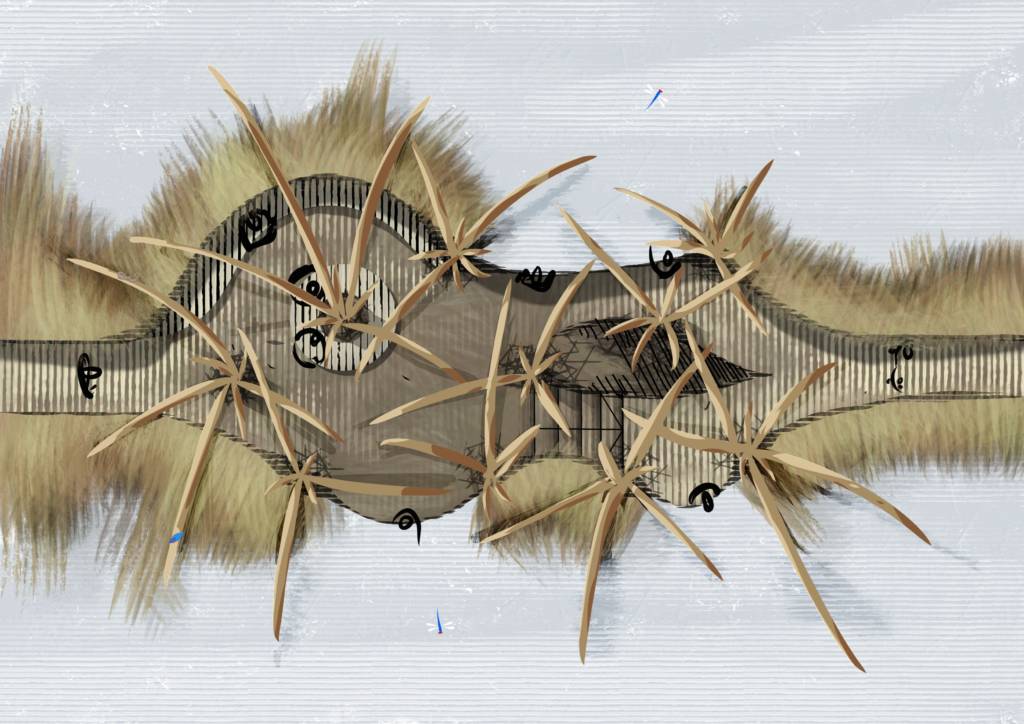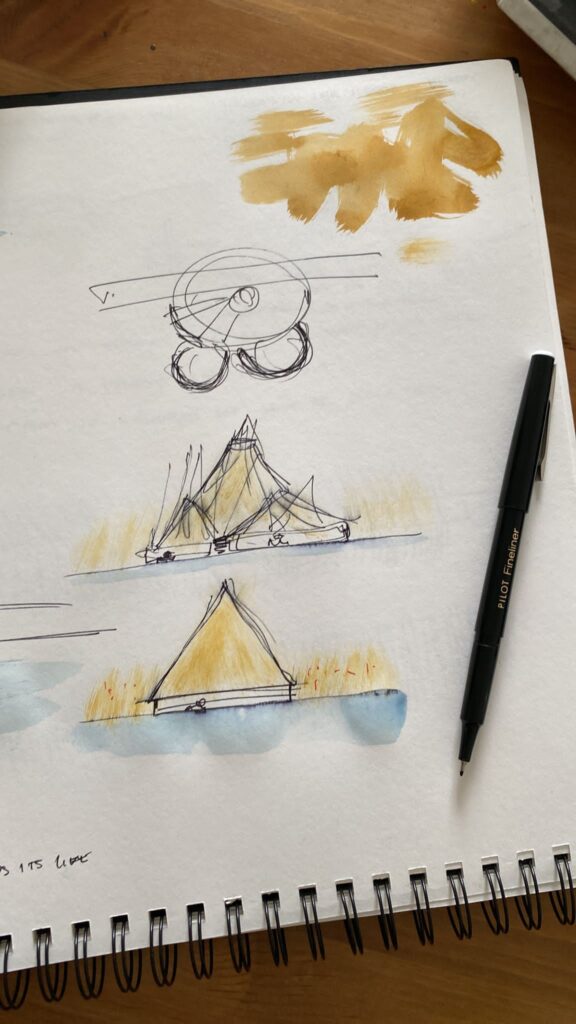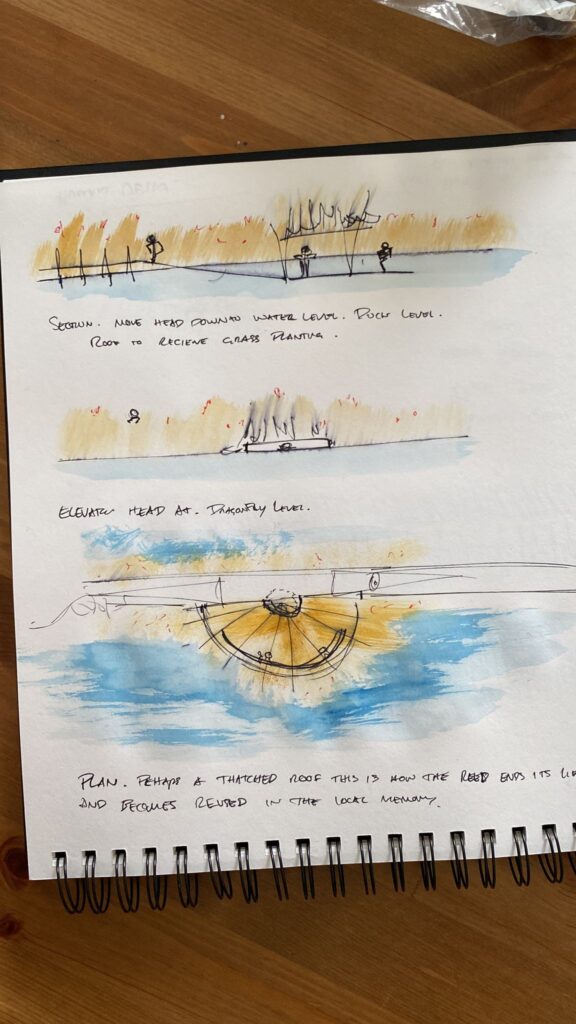2023 The Fly, the Worm and the Reed
“What is it like to be a nonhuman?” This project strives to focus on a design process which removes the norm of human-centred focus. With three team members and three pavilion sites, each chose to represent a particular nonhuman user from the local ecology of the Sebino. By telling stories of local flora and fauna as a means of understanding them, the project developed a narrative-led design motif. Three distinct characters with individual needs; each pavilion has been designed as a home for one of these beings.
Credit to fellow team mates: Ellie Gair & Harry Thompson


Pavilion no.1 tells the tale of the slow worm, warming itself under objects in retreat of the summer sun.


Pavilion no.2 listens to the march of the marsh reed, sentinel of the boundary between land and lake.


Pavilion no.3 follows the story of the dragonfly, skimming across the lake in search of an observation perch.
Placing our individual characters first within the design of each pavilion, we hope to develop a less anthropocentric architecture; three lightweight timber structures that symbiotically complement the surrounding ecology.
The Fly, the Worm, and the Reed recognises the unattainable separation of subjectivity; as humans we are unable to consider what it truly means to be anything other than what we ourselves are. We are instead method actors, playing the role of our nonhuman characters in order to contemplate design. Our individual methods of design and representation form part of our theatrical process.

The process started how we wanted to continue it; with hand sketching. I could make up some nonsense about how this was to be ‘rustic’ or ‘closer to the natural form’ but realistically, I enjoy it and don’t have to the time to start faffing around with full 3D models and rendering!
The three of us had a call and after reading over the brief we decided; three team members, three pavilions, three characters.
Each of us chose a character from the bountiful menagerie of flora and fauna present in the Riserva Naturale Torbiere del Sebino (Northern Italy) and got to work trying to understand them.
For me this lead to trying to think what a Marsh Reed might think if they could (maybe they do…). how do they perceive themselves and creatures around them?


Here are some of the words of the Reed:
‘Tall. Tall but strong. Many. A social plant. Matted leaves and undergrowth but tops stand proud and clear”
“Dense and green in the summer. Hollow and brown in the winter”
“Some form floating islands. Densely populated towns and villages. Rich in the trade of salts and fish. Their neighbours only the hardiest of seafarers.”
“To gaze at its’ reflection. The Marsh Reed stretches out. In the calm and rippled waters”
“But we start small. We grow tall, tall enough to disappear into; to hunt or to hide.”
“Atop the water’s gently rippling surface we look fluffy and soft, beneath our stems run deep and give space to those who shelter.”
“They come and cut us. We have been told our fallen are used to adorn their homes. They have pulled us up to study us, they examine us, but that is not who we are.”
“We guard the edge between land and water. softening and defining the edge which we share”
“We like to stretch over the water”

For me this inhabitation of the character resulted in a rich dialog between the space above and below the waters edge; the reed’s domain.
Secondly, like the reeds, the installation needed height and the ability to lean out over the water. Matching the reed’s desire to stare at its own reflection so too could users of this design. The towering nature of the design is symbolic of the proudness of the reed, so proud it doesn’t mind who is mingling between the roots and stems of the plant.
Finally the design needed density of texture and line, something users could touch and feel, so critical in the modern world is to give experience that can’t simply be recorded visually to be gawped at later.

Users will feel the decent into the kingdom of the Reeds, so that their perception is at head level with the waters edge. Diminishing the self importance of the human animal and lifting up the read to regal-like status.
In plan the level changes and accompanying twists and turns force the user to stay a while and take it in. Reach out over the water if they wish to mimic the reeds. Stare at their own reflections in the rippled waters edge.


